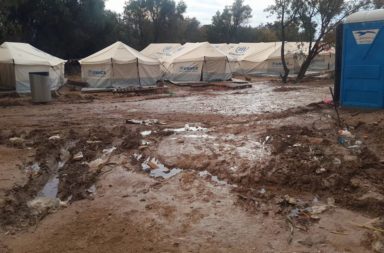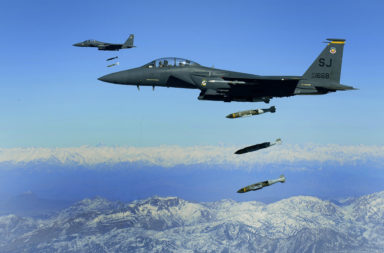The current refugee crisis is one of the most prominent and heated issues in the European political agenda. The European Union is dedicating a huge amount of financial and political attention to the management of the huge influx of refugees coming from the Middle East, Africa as well as the poorest Balkans countries. Here are 7 things that you need to be aware of:
- The EU is facing the worst migrant crisis since the end of the Second World War. In 2015, more than one million refugees arrived in Europe by boat, rail or road, fleeing violence, persecution and poverty. Previous crisis since 1945 include 200,000 Hungarian refugees fleeing communist repression in 1956, 2.3 million Rwandans fleeing in 1994 and 900,000 Kosovars fleeing in 1999. The number of Syrian refugees alone, fleeing since 2011, is close to 4 million and rising daily.
- Wars in Iraq and Syria, unrest in Africa, and chaos in Libya have spurred an exodus of refugees. The developing countries around Syria who are currently hosting the majority of refugees are reaching a critical breaking point. For example in Lebanon refugees represent 25% of the population. Therefore many refugees choose to take the risk and dangers of a trip to Europe rather than ending up in Jordanian or Turkish refugee camps. The top five countries with the highest number of official asylum-seekers are Syria with 250,000, Afghanistan with 110,000, Kosovo with 80,00, Iraq with 75,000, and Albania with close to 60,000.
- The crisis is developing into a severe humanitarian situation with death toll rising every day at alarming levels. The number of refugees reported to have died during their journey into Europe was close to 3,800 for 2015. The majority died crossing from the Maghrib into the Italian islands, mostly Lampedusa and Sicily. The second most dangerous crossing os that between Turkey to Greece, which has already claimed the lives of 800 refugees. Overcrowding is the main reason for casualties. The death of 71 migrants who suffocated inside an abandoned lorry in Austria in August 2015 was one of the most distressing cases.
- The political climate in Europe is reaching unprecedented levels of tension as EU member states bicker about responsibility-sharing. The European response has been haphazard, chaotic and very tense. This week the diplomatic relations between Greece and Austria reached a new low as Athens recalled its Ambassador to Vienna in protest of the latter’s suggestion that the Greek border should be sealed off in order to prevent refugees from making their way north into the European Union. The recalling of an Ambassador from an EU member state to another is an unprecedented diplomatic practice, which shows the severity of the crisis.
- Response from EU states has been wildly disproportional. Germany has received by far the largest number of refugees, that number coming close to 800,000 since the beginning of the crisis. Chancellor Angela Merkel pledged Syrians that if they could manage to reach Germany, they could apply for asylum there. However the country with the highest number of refugees in proportion to their population has been Hungary, with 1800 per 100,000 inhabitants, followed by Sweden at 1600, whilst the EU average stands at 255. Slovakia declared already in August 2015 that it will only accept Christian refugees. Minister of the Interior Ivan Netik claimed argued that Slovakia has no mosques so muslims would not feel very much at home there. On the other hand, Austria provoked the fury of most European countries last week as it announced that it was going to limit the number of people who could apply for asylum to 80 a day.
- 3 million more asylum seekers and migrants are projected to enter the EU in 2016. This raises many future concerns, given that European countries are already reaching a breaking point and European solidarity on this issues is coming apart at the seams. Even countries like Germany and Sweden can not be expected to exhibit a welcoming attitude forever.
- The crisis can be seen as an opportunity to fix the demographic problems presented by a rapidly ageing European population. The German labour market has already shown a great demand for . As the European labour market shrinks at an alarmingly high rate, young working-age refugees would be a good solution to the market. The main issue would be whether they would be willing to stay in their host countries in the long term and whether their host countries will be able to integrate them, both economically and socially.




